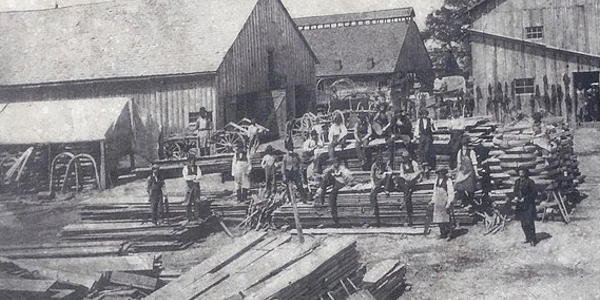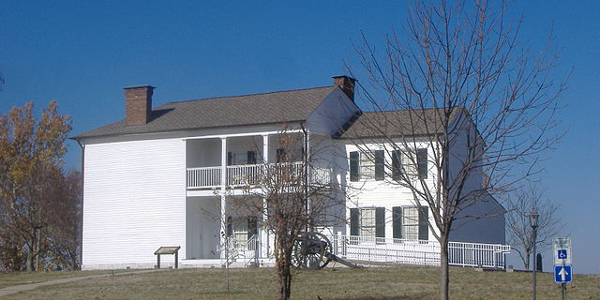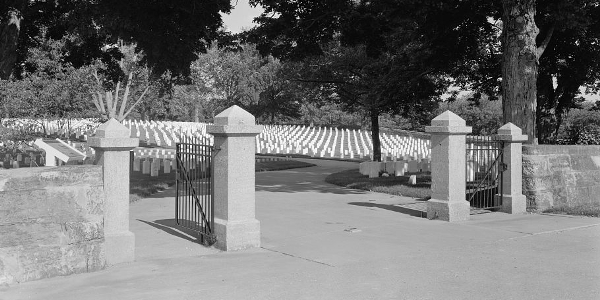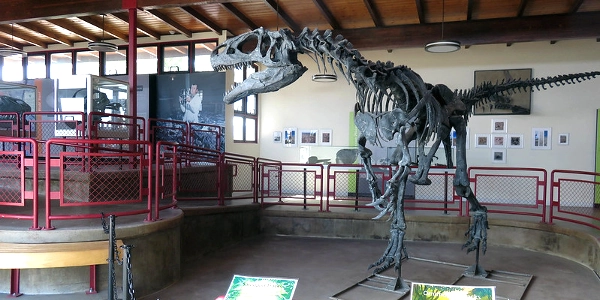
Image above: Poster for the recruitment of United States Colored Troops during the Civil War after the Emancipation Proclamation, designed by Frederick Douglass, 1863. Courtesy Wikipedia Commons.
Spotlight on Lesser Known History
Camp Nelson, Kentucky
America's Best History Spotlight
On this page we're going to Spotlight the lesser known historic sites and attractions that dot the history landscape across the USA and are worth a visit if you're in their area. And while they may be lesser known, some are very unique, and will be that rare find. You'll be, at times, on the ground floor, or maybe even know something others don't. It'll be fun. Visit them.

Camp Nelson, Kentucky
In 2019, Camp Nelson was designated a national monument, but, of course, it had been an important national treasure and historic site prior to the designation by President Trump. In 1863, Camp Nelson had been established by the Union Army twenty miles south of Lexington, Kentucky. It would become a Civil War camp with a variety of purposes, including a depot for supplies, as well as recruitment center for Tennessee soldiers among the citizens and slaves of East Tennessee. And that last line is where Camp Nelson takes, for most, its most important historical place. Camp Nelson was the location enslaved people from the region escaped their living condition and became soldiers in the newly born United States Colored Troop. Photo above: Civilian employees at Camp Nelson, repairing military vehicles, 1864, unknown author. Courtesy Wikipedia Commons.
Sponsor this page for $100 per year. Your banner or text ad can fill the space above.
Click here to Sponsor the page and how to reserve your ad.
Info, What's There Now, History Nearby

Camp Nelson Heritage National Monument, Kentucky
Since the Camp Nelson interpretive park is still undergoing its transition to a national monument, there's so much known and unknown about its ranger programs and additional exhibits. Suffice it to say, there's a whole lot of history here to visit on its five hundred and twenty-five acres, both inside and outside the monuments designated boundaries. Yes, most of the original buildings are gone, sold after the war. But the single one that remains is the Oliver Perry Mansion, known as the White House after General Burnside confiscated it for Union use. The home was built in 1846 for Oliver Perry, not the New Englander, and wife Fannie Scott. It is now a museum.
There are five miles of walking trails on site, an interpretive center with exhibits and orientation, plus the Camp Nelson National Cemetery one mile down the road.
Image above: Oliver Perry House at Camp Nelson, used as Union headquarters during the Civil War encampment, 2008, C. Bedford Crenshaw. Courtesy Wikipedia Commons. Below: Lodge at the Camp Nelson National Cemetery, 2004, David W. Haas, Historic American Buildings Survey. Courtesy Library of Congress.

Where Is It
Camp Nelson Heritage National Monument is located twenty miles south of Lexington, Kentucky, in Jessamine County, Kentucky, near the town of Nicholasville. For those coming from the Lexington area, the address of the Visitor Center is 6614 Danville Road, Nicholasville, KY 40356. That's off US 27 if coming from Lexington, about six miles from Nicholasville.
Buy Chronology

Great Book for the History Fan with Fifty Short Essays Telling the Story of American History.
What is There Now
Five hundred and twenty-five acres of Camp Nelson history, three hundred and eighty technically within the monument, plus the Camp Nelson National Cemetery. Original Oliver Perry mansion, used as Union headquarters, as well as an Intepretive Center with exhibits, facilities, and orientation.
The site is split into several sections; Visitor Center, USCT Site, earthen fortifications, Oliver Perry house, prison site, and more in one. A second section includes the Ordnance Depot Site. A third section is off Hall Road, where a hospital and Home for Colored Refugees was located. The Camp Nelson National Cemetery, although technically not part of the park, is near the Ordnance Depot section.
When Open and How Much
Since Camp Nelson is a new National Park, it is still operating in partnership with Jessamine County. Traditionally, the interpretive center is open Tuesday to Saturday from 9:00 a.m. to 5:00 p.m. Grounds are open seven days a week from dawn to dusk. There is currently no fee to visit.
Fees subject to change.
Websites
Camp Nelson Heritage National Monument
History Nearby
From a national park standpoint, Kentucky is home to Mammoth Cave, the birthplace of Abraham Lincoln, Big South Fork National River and Recreation Area, Cumberland Gap National Park, Fort Donelson, and more. For the Civil War buff, another great site is the state park for the Battle of Perryville. Other local Kentucky sites of interest to Civil War heritage fans include the Mary Todd Lincoln House in Lexington and the Jefferson Davis State Historic Site in Fairview.
Photos, History, and More Spotlights

Exhibits and Interpretive Trails
The Visitor Center at Camp Nelson is a great place to start, including unique diorama style exhibits, orientation, and more. Ask about the interpretive trails while there for the best place to continue your visit. None of the trails are particularly long, from one half mile to nearly one and one half miles, and they cover different topics.
The Depot Trail - From the Visitor Center south, includes wayside markers about the supply shops, prison, merchant's row, bakery, and warehouses that were there during the camp.
Fort Trail - Fort Jackson earthen fort, located north of the White House.
Fort Putnam Loop - Reconstructed Fort Putnam.
Long Fort Trail - Forts, engineer quarters, corrals, and stables.
Fort Jones Overlook Trail - Constructed of stone, Fort Jones is one of the best preserved forts in the state of Kentucky, overlooking the Hickman Creek Valley.
Image above: Exhibit of a Camp Nelson Cabin, 2008, C. Bedford Crenshaw. Courtesy Wikipedia Commons.

Camp Nelson National Cemetery
The Camp Nelson National Cemetery was originally established as a cemetery for the Civil War encampment, but is now a national cemetery for war veterans of all conflicts. Eight hundred and thirty-seven of the troops of the United States Colored Troops are buried there; a total of just under two thousand five hundred troops from the Civil War in total.
The cemetery was established in 1866. Today a Visitor Center is located in the former superintendant's house. In 1995, the Daughters of the Union constructed a granite monument for Union soldiers at the site.
Camp Nelson National Cemetery was added to the National Register of Historic Places in 1998. Its thirty acres are open daily from dawn to dusk.
Photo above: Gates at Camp Nelson National Cemetery, 2004, David W. Haas, Historic American Buildings Survey. Courtesy Library of Congress.

More Facts About Its History
It should come as little surprise, but Camp Nelson was also on the national underground railroad network and is recognized as an official site on the NPS National Underground Railroad Network to Freedom.
Camp Nelson was originally established as a supply depot and hospital by General Ambrose Burnside, reassigned head of the Department of Ohio, in April 1863. At its height, it spanned four thousand acres and included three hundred structures and eight forts.
Camp Nelson transitioned as a recruitment center for African American troops, becoming the third largest in the nation after all restrictions on recruitment were lifted in June 1864. Five hundred troops in the USCT enlisted that June; one thousand three hundred and seventy in July.
Despite that recruitment, refugees in camp unable to serve, including women and children, were removed in November 1864, with many deaths occurring due to the harsh winter. The policy was overturned within three weeks and establishment of the Camp Nelson Refugee Camp was started.
Photo Above: Interpretive Center at Camp Nelson National Monument, 2008, C. Bedford Crenshaw. Courtesy Wikipedia Commons.

T-Shirts and Gifts from the official souvenirs of Americasbesthistory.com.
About
America's Best History where we take a look at the timeline of American History and the historic sites and national parks that hold that history within their lands.
Photos courtesy of the Library of Congress, National Archives, National Park Service, americasbesthistory.com and its licensors.
- Contact Us
- About
- © 2021 Americasbesthistory.com.
Template by w3layouts.


